Armenia is a landlocked country situated in the Caucasus region, between the Black and Caspian Seas. It borders with Turkey, Georgia, Azerbaijan and Iran, however, only two of the borders are open. Due to historic conflicts, borders with Turkey and Azerbaijan are still closed. Armenia is about 8 times smaller than United Kingdom with population around 2,9 million.
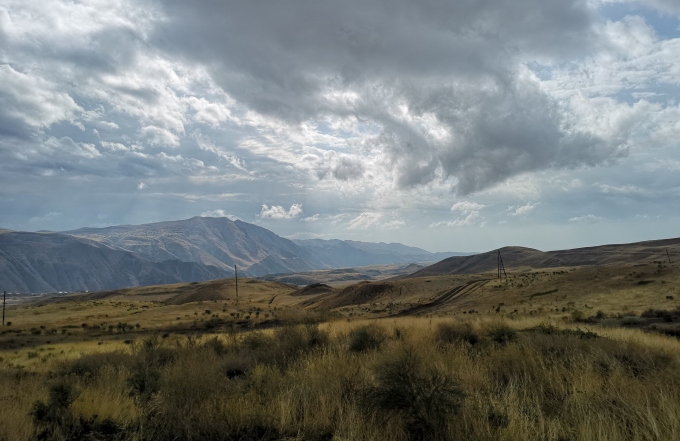
Armenia’s largest airport, Zvartnots International, is about 20 minutes’ drive from the city. Currently there are no direct flights between United Kingdom and Armenia. Getting there takes a bit of an effort and about 6 – 7 hours, well worth it!
My journey to Armenia starts with a late arrival in one the oldest continuously inhabited cities in the world, Yerevan. It is slightly older than Rome and I have just missed the two-day celebrations of its 2800th anniversary. At 2 am the city is already clean and tidy and ready for the next day.
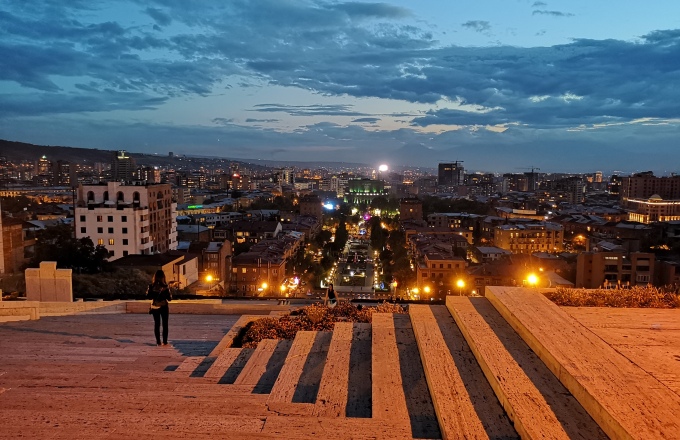
After a short sleep we gather for a journey to one of the largest freshwater high-altitude lakes in the world, Lake Sevan. Due to its proximity to Yerevan, Lake Sevan is one of the most visited sights in Armenia. The sun is out, and the lake is as blue as is the sky! At the widest Lake Sevan is about 30 km and the length of it is 80 km.
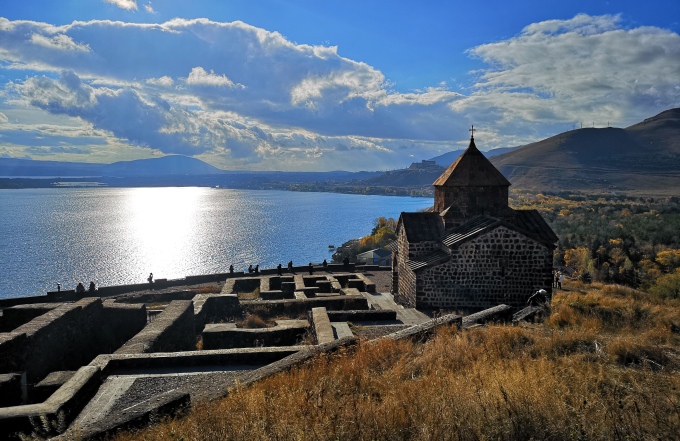
On the shore, overlooking the lake, sits the picturesque Sevanavank monastery which dates back to 4th century.
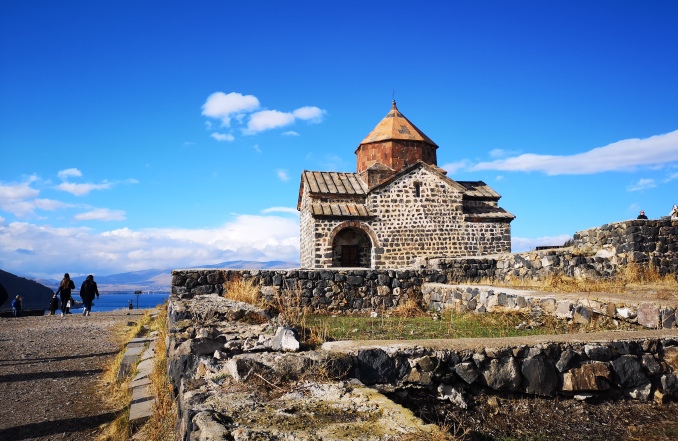
Lake Sevan boasts a healthy fish population and for the lunch at a costal café we are served delicious local fish kebabs.
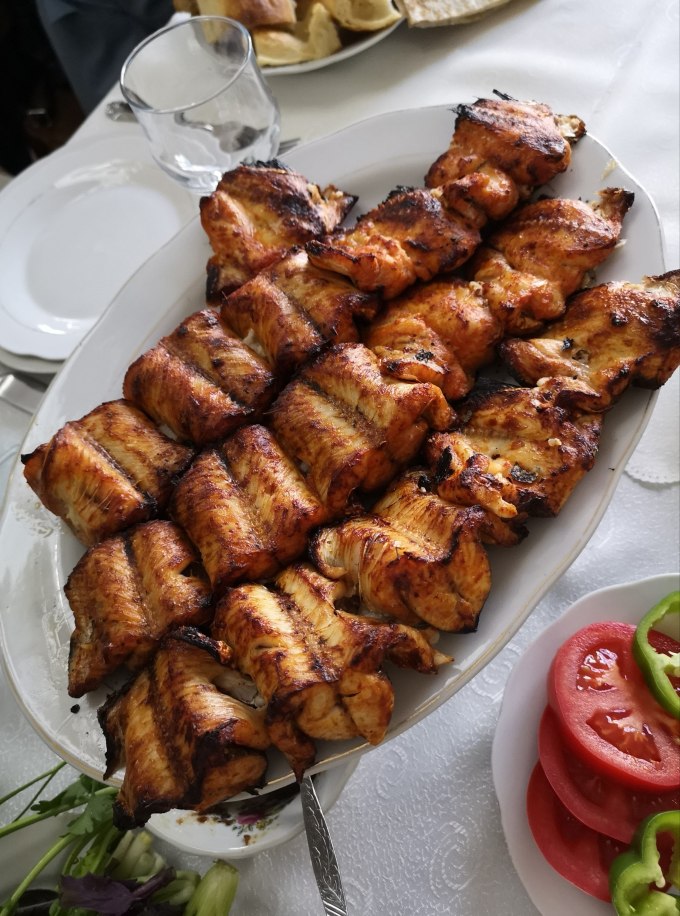
We continue to the mountainous resort Dilijan, which is often referred to as the “Armenian Switzerland”. Near the town, in a secluded place in the forest sits the Haghartsin monastery dating back to 11th – 13th century.
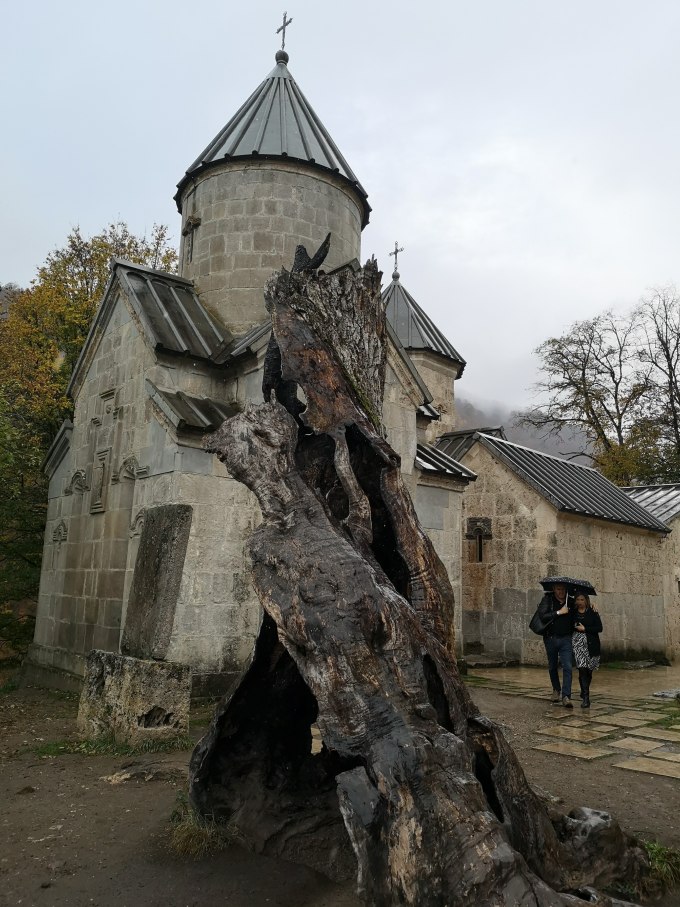
On the first day of the tour it is clear that religion plays an important part in Armenian history. Armenia is the first country to have adopted Christianity as a state religion in 4th century and the main attractions of the country are monasteries. However, the locations of the monasteries are the most spectacular I’ve seen, they date so far back in the history that it is hard to comprehend.
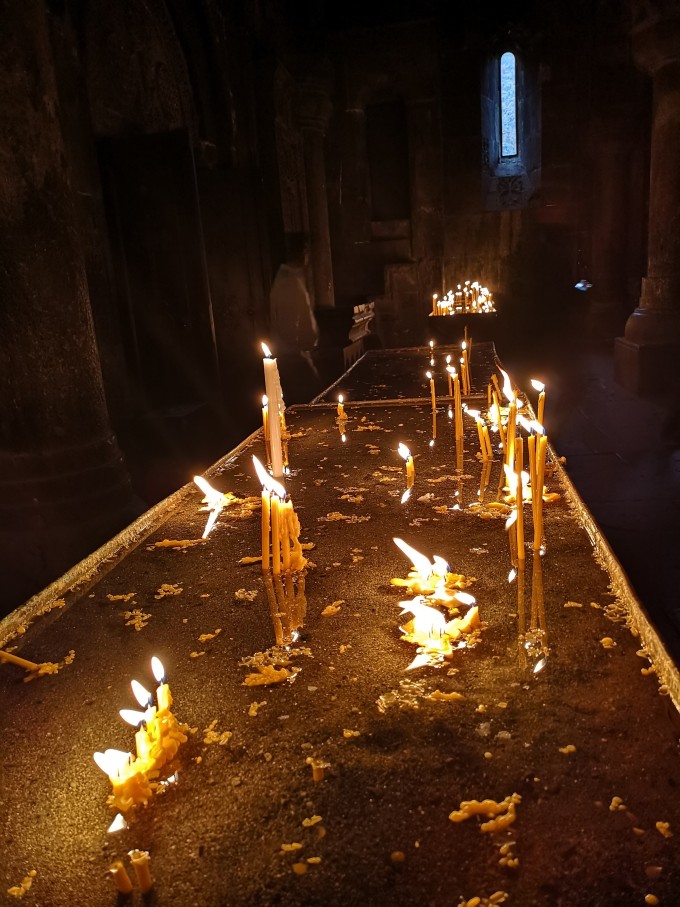
In the afternoon we return to Yerevan for an evening stroll around the city. Yerevan is known as the “pink city” due to the colour of the volcanic stone used for building. It is lively and safe city with lots of love for art, music and food. Cascade complex in the city centre is considered the modern art center of Yerevan and the home to Cafesjan Modern Art Museum.
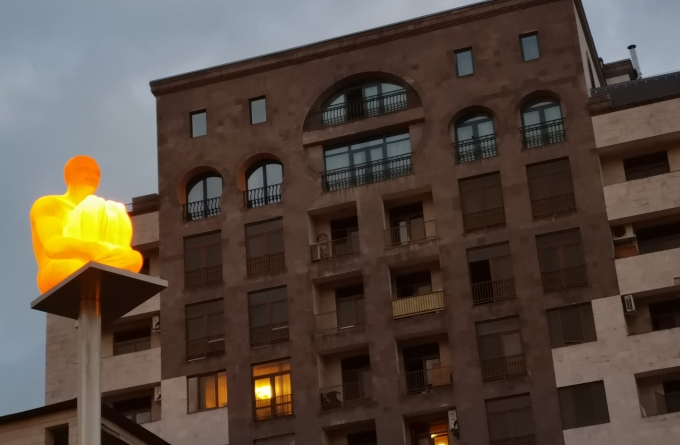
Artworks are displayed in the front square and as you take the stairs (or escalator) up, you’ll reach a pool with beautiful sculptures. The viewing platform on the very top offers spectacular views of Yerevan.
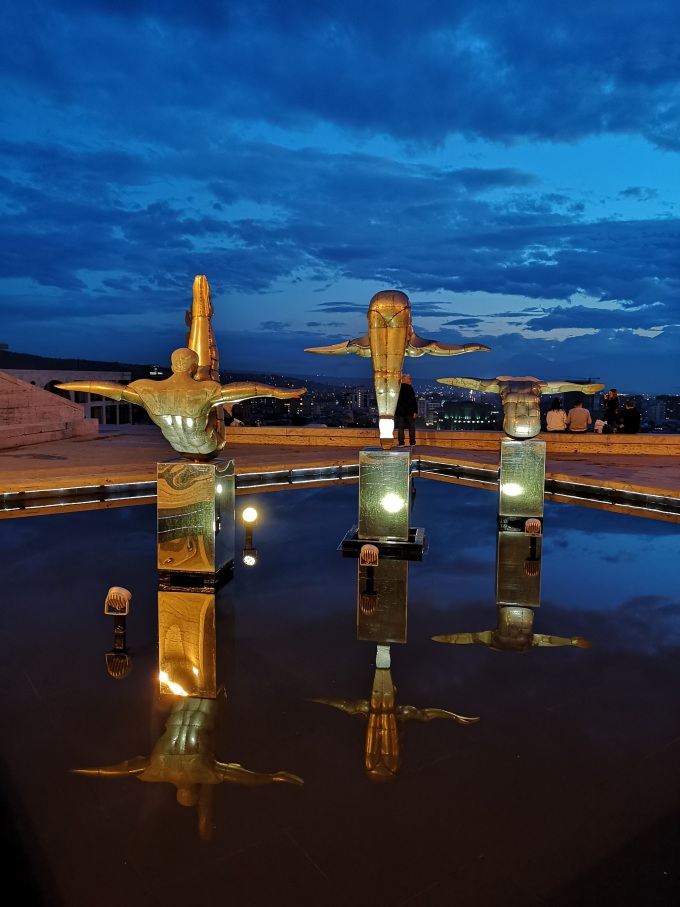
The next day starts with a visit to Zvartnots, a temple of Vigil Forces, built in the 7th century. It reminds of something you’d see in Greece but is a unique example of Armenian architecture of early Christian period. The temple is included in the UNESCO World Heritage List and next to it is a little museum providing more information and models suggesting how the temple used to look.
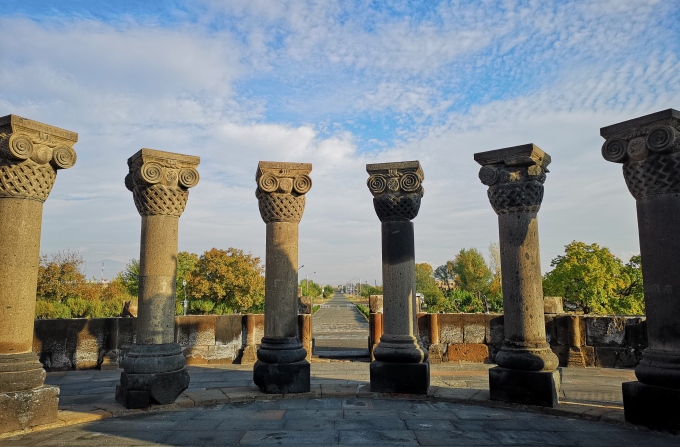
Our next stop is Etchmiadzin city, the ancient and spiritual capital of Armenia. It was renamed Vagharshapat in 1992 and is the seat of the Armenian Catholicos. The Etchmiadzin Cathedral was founded in 301 by St. Gregory the Illuminator and was included in the UNESCO World Heritage List in 2000.
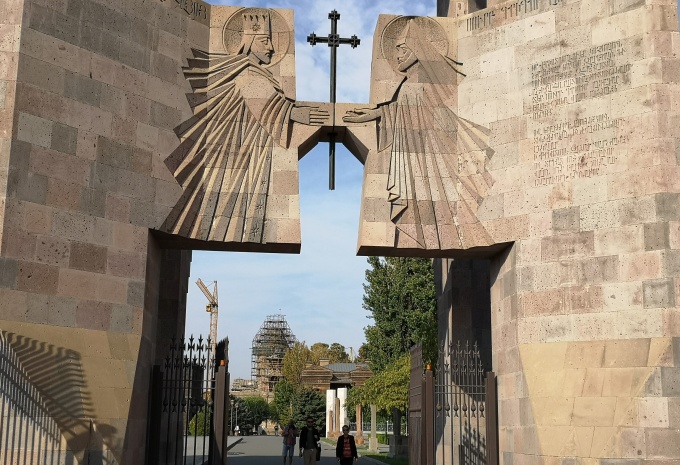
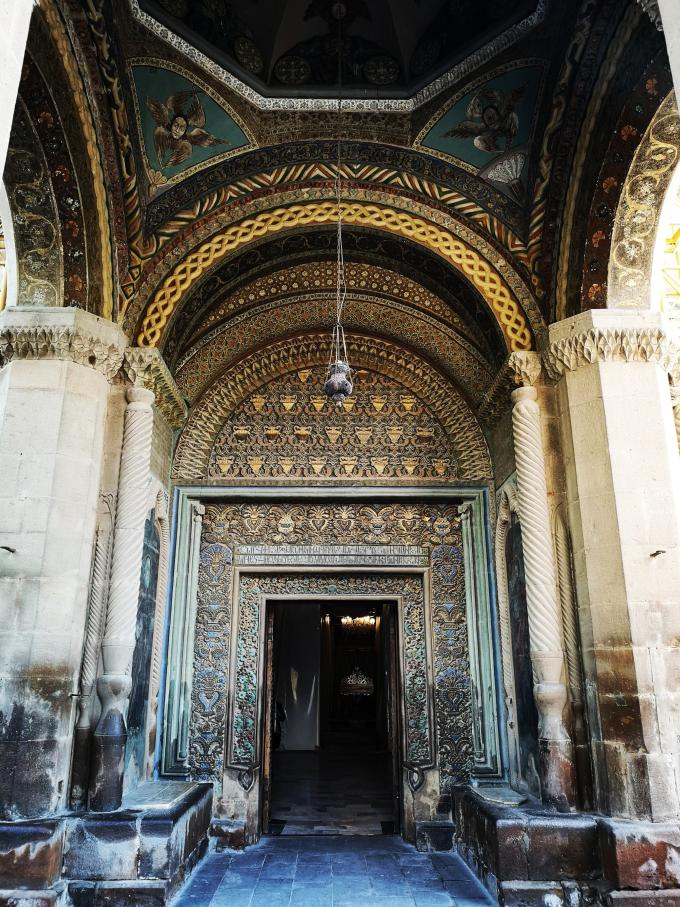
We continue to the Ararat valley. Mount Ararat is one of the major symbols of Armenia, however, it is now located in Turkey. Armenians consider the mountain sacred and insist that the best view of the Mount Ararat is still from the Armenian side. From the postcards I’ve seen, they are right! On a clear day it is even visible from Yerevan. We are not so lucky; the peaks of Ararat are hiding in the clouds but Khor Virap monastery is spectacular in its architecture and location.
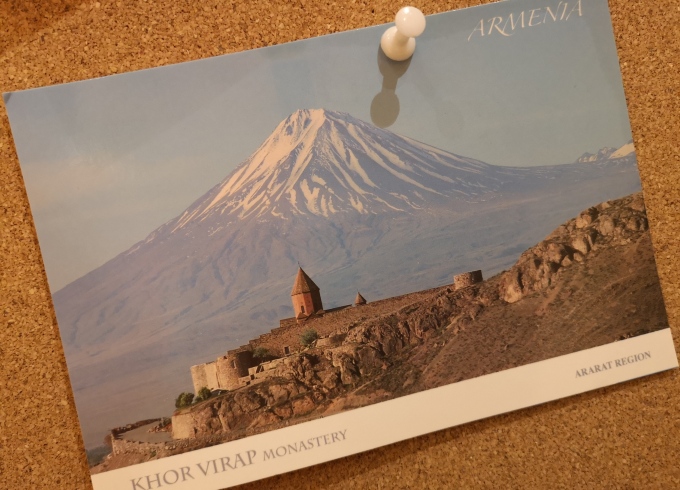
The church of Khor Virap was the place of imprisonment of St. Gregory the Illuminator, who stayed here in the small dungeon for 13 years without any food, accused by the Armenian King of preaching Christianity. It is one of the holy places for the Christian world. Many Christians believe the mountains of Ararat are the final resting place of Noah’s ark.
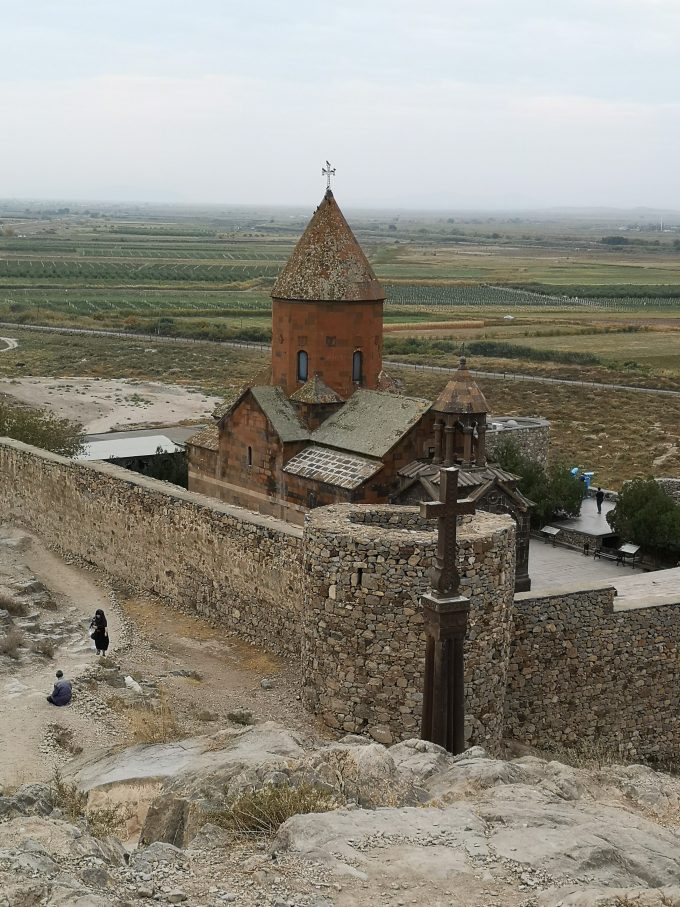
From the Ararat Valley, we continue along the scenic landscapes to our next stop. The route takes us through a spectacular red rock canyon to a picturesque valley where Noravank Monastery is situated. Built in 13th century it is one of the most famous monasteries in Armenia. The canyon is impressive with towering rock formations on either side.
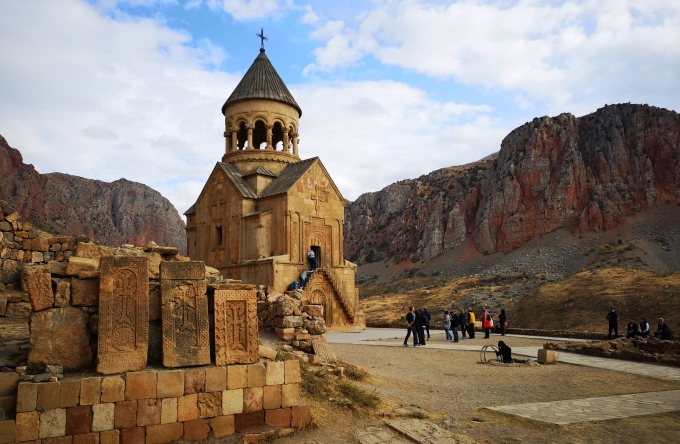
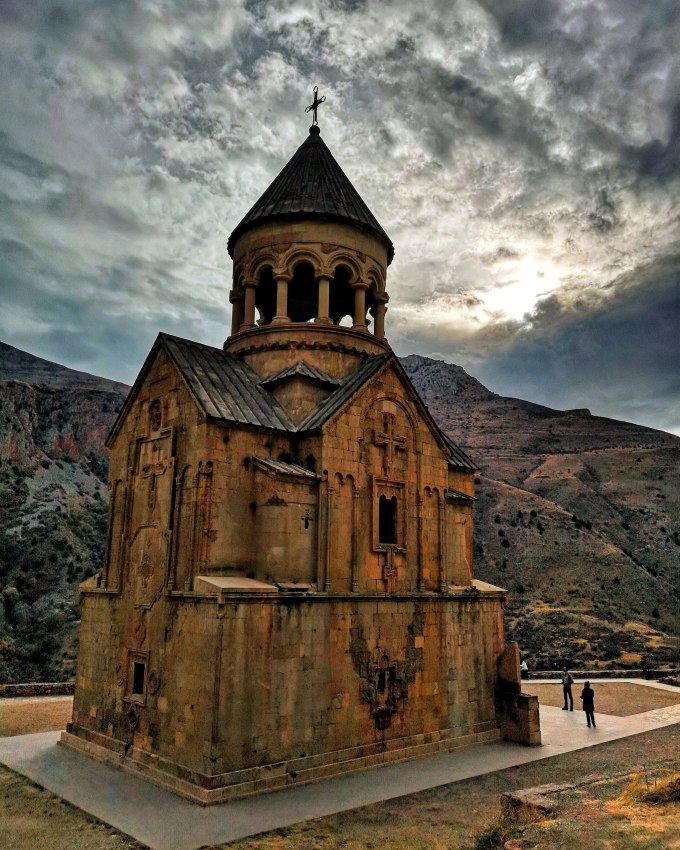
By the church you will find khachkars or cross-stones, one of the most recognizable symbols of Armenia. Since the wooden crosses had a short-lived nature, people began to engrave crosses on the stones (khach – cross, kar – stone). They are unique to Armenian culture and were made on a variety of occasions such as to honour a victory, completion of a temple or bridge or more often they served as gravestones.
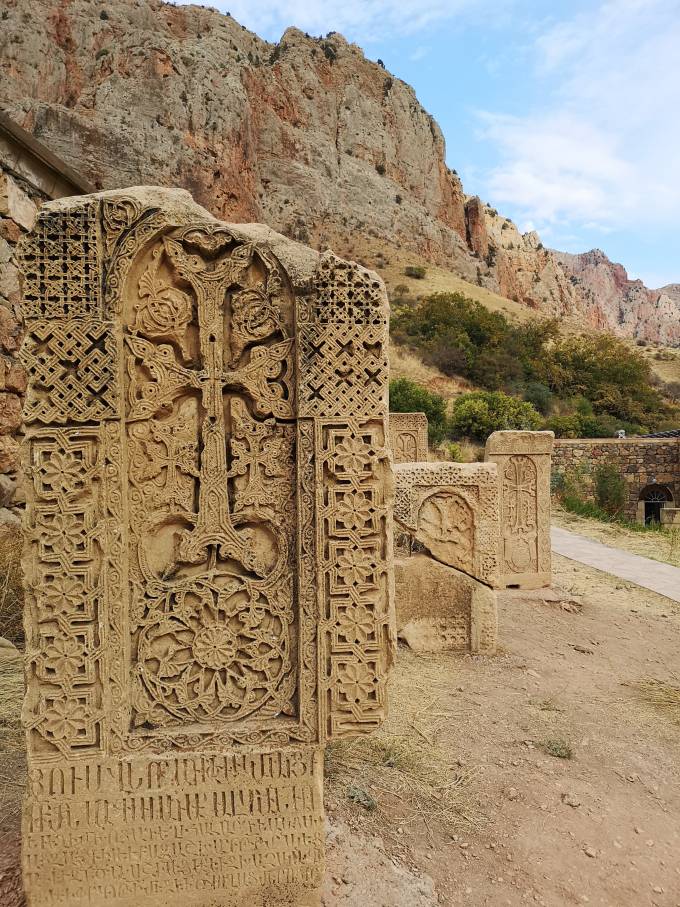
Before leaving Yerevan, we visit two more places – The Matenadaran and Armenian Genocide Memorial & Museum.
The Matenadaran is The Mesrop Mashtots Institute of Ancient Manuscripts. It has the largest and most outstanding collection in the world. Some of the manuscripts date back to 7th century and are greatly appreciated by historians and artists.
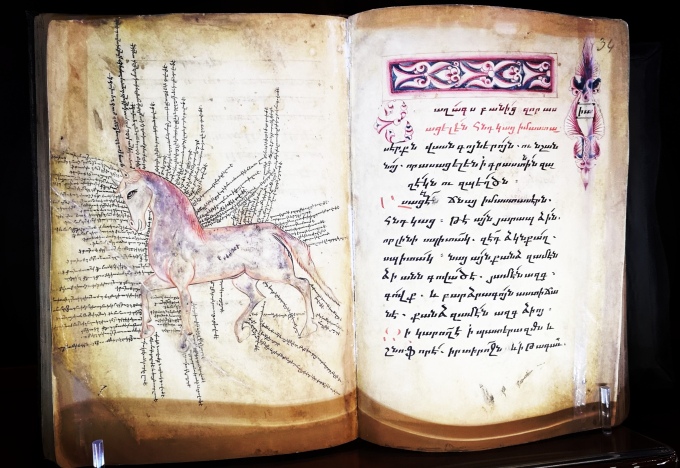
The Armenian Genocide memorial complex is an emotional place set on the hill of Tsitsernakaberd in Yerevan. It was built in 1967 to commemorate the massacre of Armenians in the Ottoman Empire from 1915 to 1922. It offers a powerful experience telling the story of this horrific historical event through photographs, films, newspaper reports and other documents.
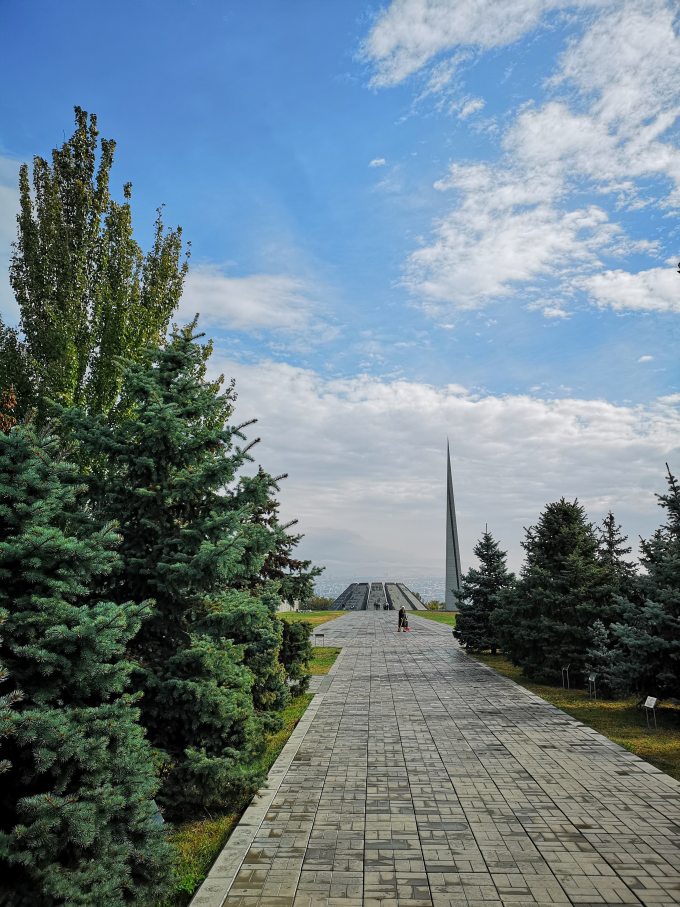
Our journey continues to the only remaining pagan temple in Armenia devoted to the God of Sun – Myrth, in Garni. The Greco-Roman temple stands proudly on a rocky ridge with a deep canyon presenting a beautiful vista. The temple was a summer residence for Arshakid dynasty and remains of the Royal Palace and Royal bathhouse can be found nearby.
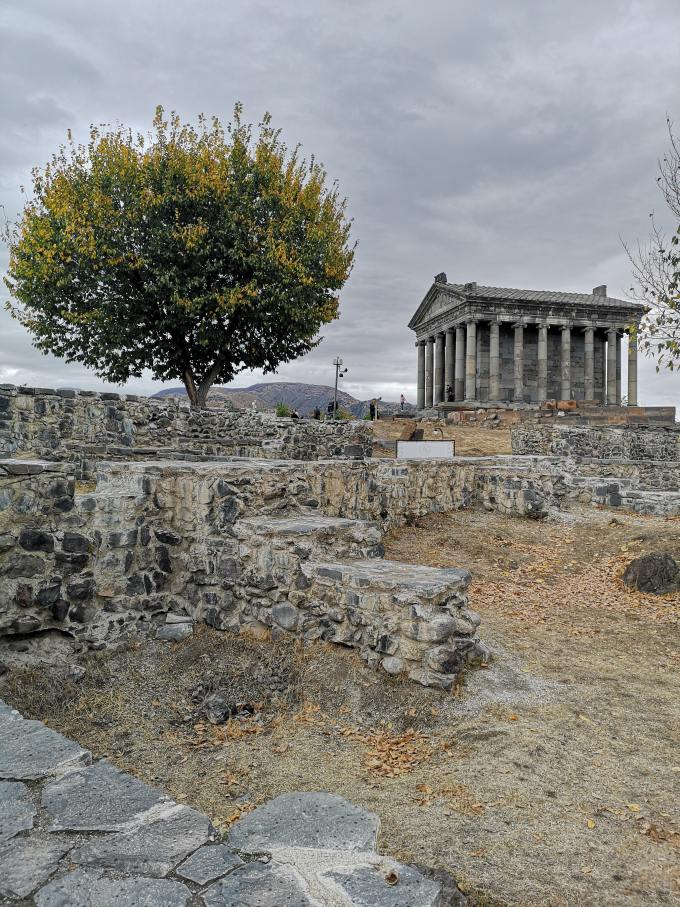
Armenian people are very kind and hospitable, and we are invited for a family hosted lunch in a village house. The ladies are hard at work making “lavash” – traditional Armenian flat bread baked in stone-make oven and we get the first taste the freshly made bread.
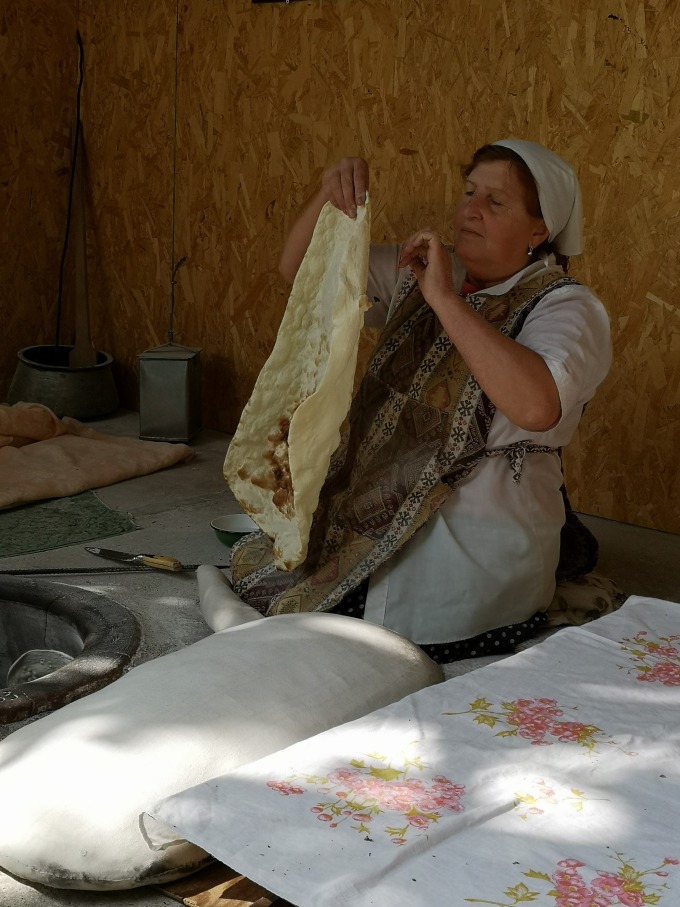
In the afternoon we continue to a unique monastery carved into the cliffs – St. Geghard’s. The name means “holy spear” in the honour of a long-preserved spear, allegedly the same spear that pierced the body of crucified Christ. It is now exhibited in the museum of Etchmiadzin Cathedral. The monastery is in the list of UNESCO World Heritage Sites.
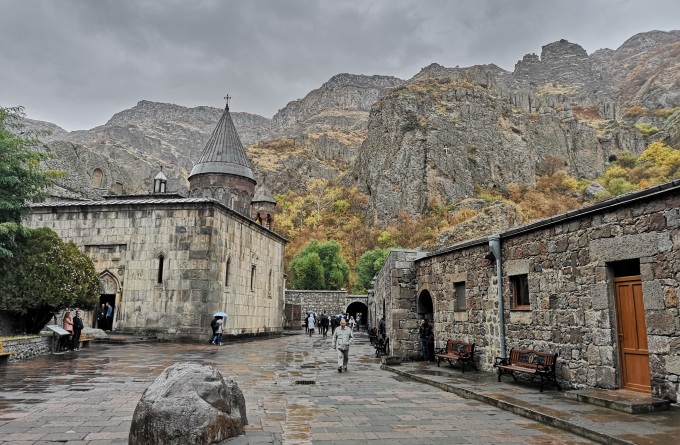
Along the route we visit a local winery in Areni village. During the archaeological excavations back in 2010, the world’s oldest winery was found in a local cave. It dates back 6100 years and is the earliest winery and wine cellar found to date. In the same area in 2008, the world’s oldest leather shoe was found. It is 5,500 years old.
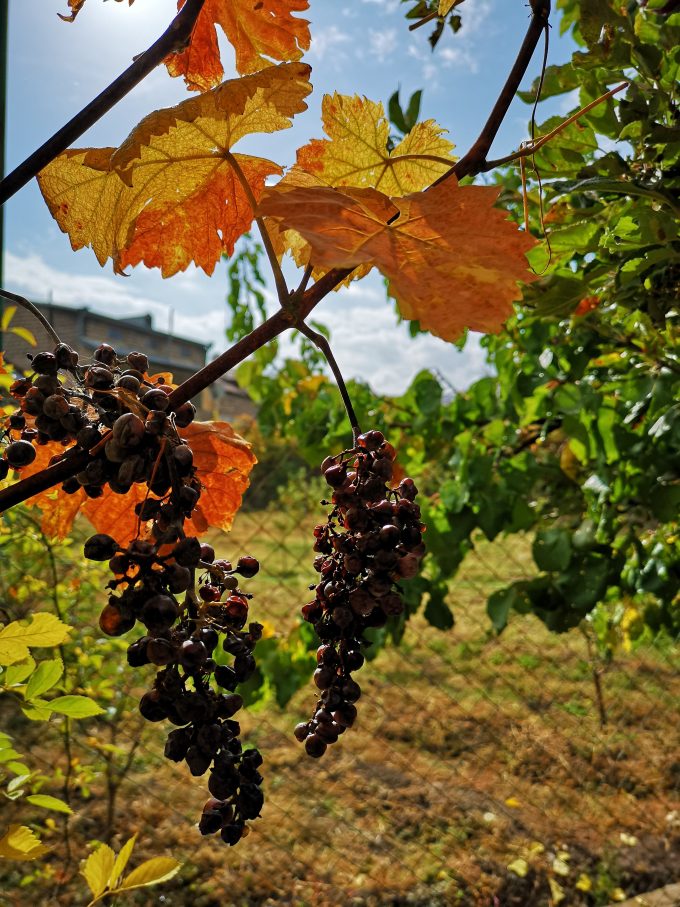
The journey through Armenia ends with lots of wonderful impressions about people, places and food. We have seen many monasteries but each of them has been very unique and locations spectacular. If you wish to experience a similar holiday, have a look at our Highlights of Armenia Tour.
My journey continues across the border with a holiday in Georgia, and if you wish to visit both countries, have a look at our Highlights of Armenia and Georgia Tour.
Daina Kontrima
for Baltic Travel Company ( all rights reserved for Baltic Travel Company )
This entry was posted on Monday, June 10th, 2019 at 11:28 am; on the subject of Armenia.